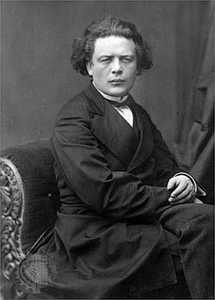Curved versus angular Movements
Although a rectilinear component will be found in practically all pianistic movements,
the major part of the movement , at least the part with which we shall be chiefly concerned, and which will
form the subject of our study, will remain curvilinear. The question whether pianistic movements are primarily angular or curvilinear may be answered after a study of the mechanical principles underlying the geometric phases of piano-playing.
The chief geometric characteristic of piano technique is change in the direction of motion.
And physiologically this probably constitutes the biggest problem of technique.
A change in direction may be abrupt or gradual. In the first case an angle will be formed; in the second case, a curved line. The freedom of all curvilinear movements when compared to changes in the rectilinear movements is a fact so patent that its reality need scarcely be further shown. The operation of any machine illustrates it, and the readily perceptible awkwardness of angular bodily movement will prove it.
This awkwardness results from interference with the law of mechanics according to which a body in motion remains in motion in unaltered direction unless acted upon by a force. The amount and abruptness of change in the path of a moving body depend upon the amount of force.
Accordingly, sudden and marked changes in the direct ion of a movement involve the expenditure of much energy, and since the changes in direction do not, in such a case, contribute to the final aim of the movement, the latter becomes in-coordinated.
- Although a rectilinear component will be sound in practically pianistic movements, the major part of any study will remain curvilinear.
- Whether pianistic movements are angular or curvilinear may be answered after a study of the mechanical principles underlying the geometric phases of piano-playing.
- The chief geometric characteristic of piano technique is change in the direction of motion.
- This constitutes the biggest problem physiologically.
- A change in direction may be abrupt or gradual.
- An abrupt change in direction will produce an angle.
- A gradual change in direction will produce a curved line.
- The freedom of curvilinear movement when compared to changes in rectilinear movement is patent.
- The operation of any machine illustrates the freedom of curvilinear movement.
- The awkwardness of angular bodily movement interferes with the law of mechanics.
- Newton's First Law- A body in motion remains in motion in an unaltered direction unless acted upon by force.
- The amount and abruptness of change in the path of a moving body depend upon the amount of force.
- Sudden and marked changes in the direction of a movement involve the expenditure of much energy.
- The changes in direction do not contribute to the final arm of the movement.
- The expenditure of energy is incoordination.
